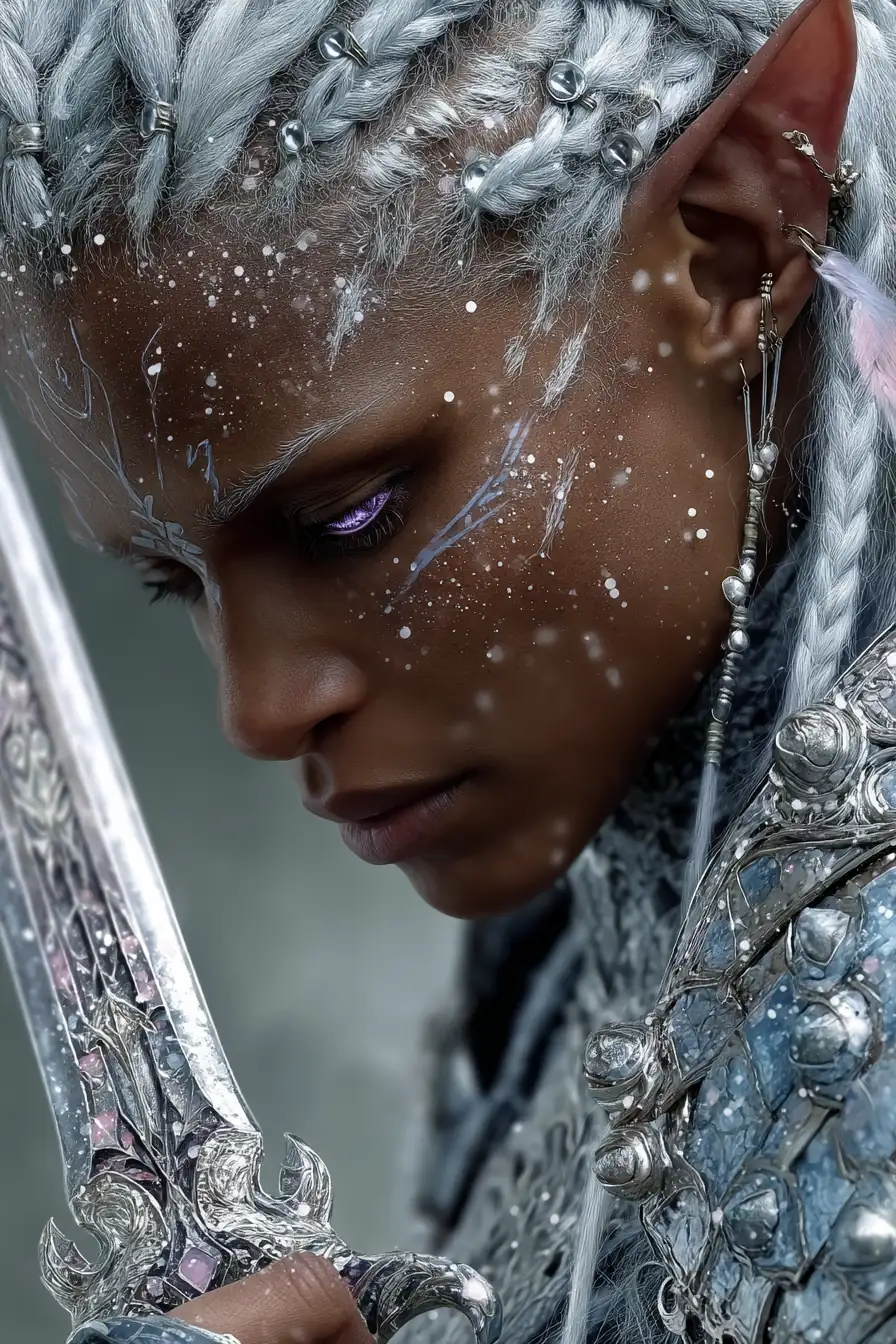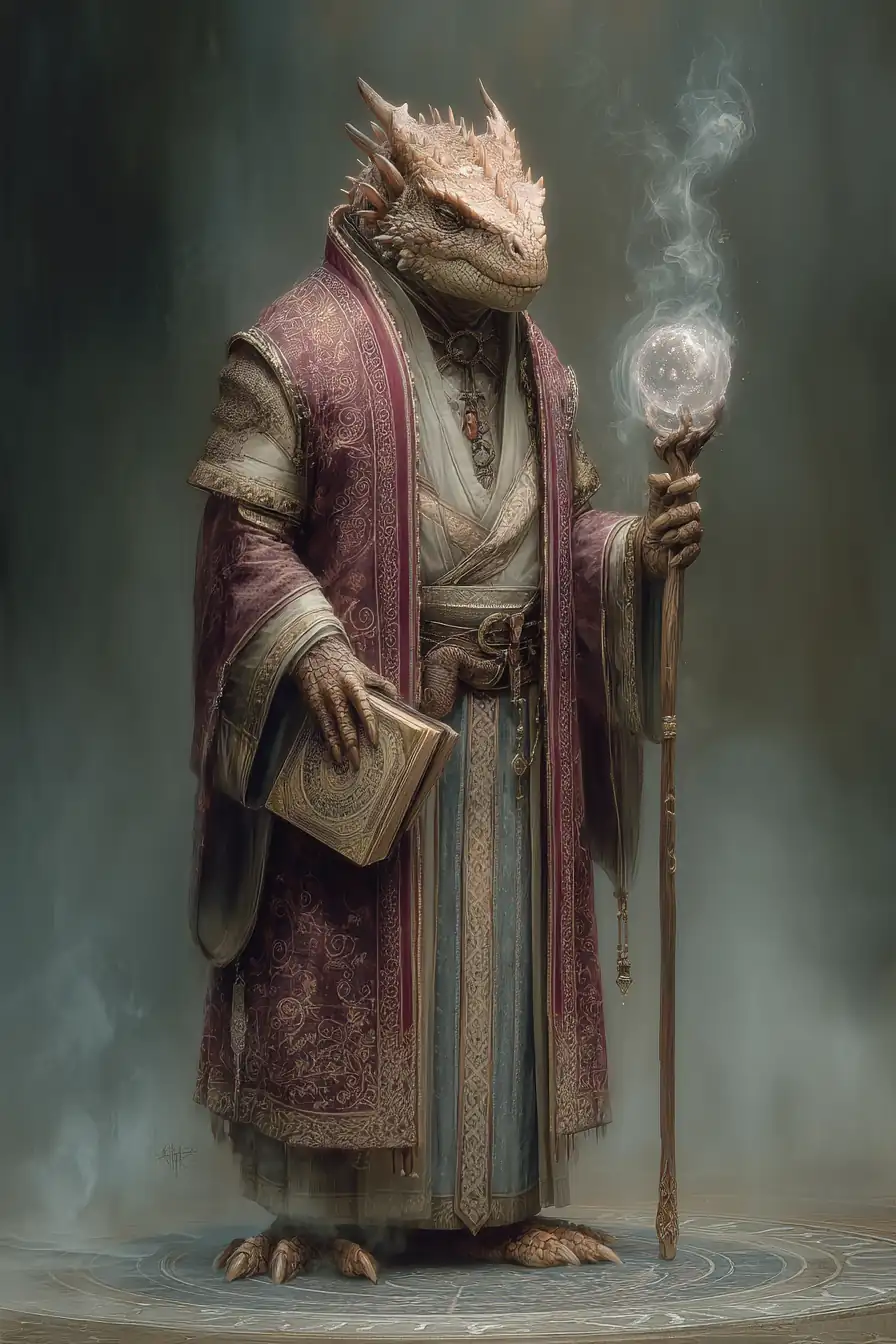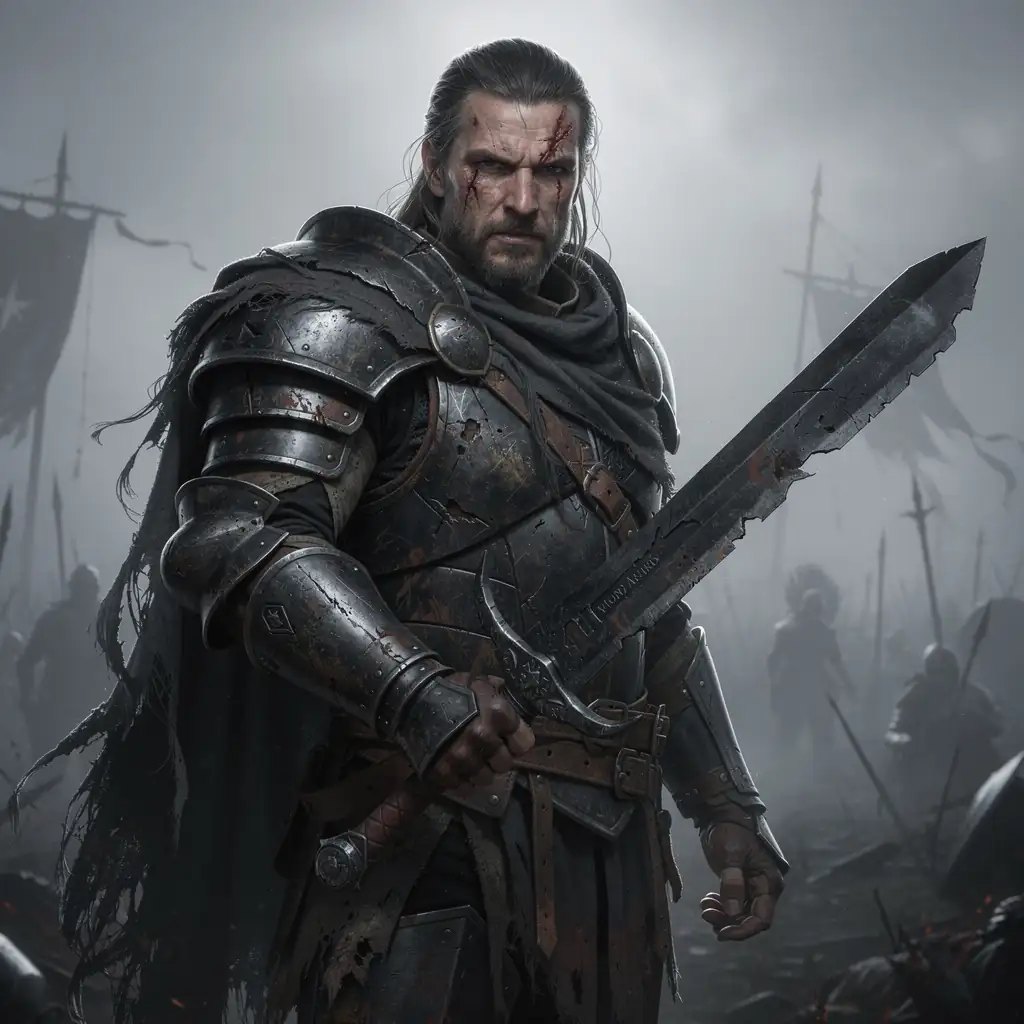Create Fantasy Characters in Midjourney - Complete Guide
Create fantasy characters with Midjourney. Learn to design elves, dwarves, magical beings and fantasy creatures with expert prompt techniques.

Introduction
Creating fantasy characters in Midjourney requires a blend of imagination, mythological knowledge, and technical understanding. This guide explores techniques for generating various fantasy beings, from classic elves and dwarves to unique magical creatures and legendary heroes. Whether you're creating characters for fantasy novels, game concepts, or personal artwork, these techniques will help you bring your imaginative characters to life with consistency and quality.
Core Fantasy Character Categories
Humanoid Races
Magical Beings
Fantasy Creatures
Legendary Heroes
Key Parameters for Fantasy Characters
Fine-tune your fantasy character creations with these essential parameters.
Fantasy-Specific Parameters
Note:
The most compelling fantasy characters balance familiar mythological elements with unique creative touches. Consider how magical features, cultural details, and personality traits work together to create memorable beings.
Detailed Style Examples
Note:
This section showcases key fantasy character types with practical examples. Each example demonstrates specific techniques and parameter settings you can adapt for your own creations.
Elven Warrior
Ethereal fantasy characters with graceful features and magical qualities.


Fantasy elven warrior character: ethereal sharp features with high cheekbones and delicate bone structure, pointed ears with elegant curved tips, luminous violet eyes with magical inner glow, flowing silver hair with intricate braided details and elvish ornaments, porcelain skin with subtle iridescent quality, ornate silver platemail armor with blue gem inlays and elvish engravings, combat stance wielding glowing enchanted longsword, magical aura with particle effects and ethereal mist, dramatic fantasy lighting with rim glow, high fantasy art style --ar 2:3 --stylize 750 --q 2
Key Techniques:
- Include race-specific features (pointed ears, ethereal quality, elegant proportions)
- Add magical elements (glowing eyes, auras, enchanted equipment)
- Use fantasy-specific materials (mithril, enchanted gems, magical metals)
- Specify elvish cultural details (braids, ornaments, elegant design)
- Apply
--stylize 750for dramatic fantasy aesthetic
Dwarven Craftsman
Sturdy fantasy characters with distinctive cultural features and craftsmanship.


Master dwarven blacksmith character: stocky muscular build with broad shoulders, weathered face with strong features and keen intelligent eyes, magnificent braided beard with metal clasps and beads, calloused hands showing years of craftsmanship, practical leather work apron over sturdy tunic, magical runic hammer glowing with enchantment, standing in underground forge with magical flames casting warm orange light, anvil and masterwork tools visible, stone architecture with dwarven runes, focused proud expression --ar 2:3 --stylize 700 --q 2
Key Techniques:
- Emphasize racial characteristics (stocky build, impressive beard, sturdy features)
- Include cultural elements (runes, metalwork, underground setting)
- Add craftsmanship details (tools, forge, masterwork items)
- Use appropriate lighting (forge glow, warm underground light)
- Apply
--stylize 700for detailed fantasy realism
Dragon Sage
Powerful magical beings with draconic features and ancient wisdom.


Ancient dragon sage in humanoid form: wise ageless face with subtle draconic features, golden reptilian eyes with vertical pupils showing ancient knowledge, small elegant horns emerging from temples, iridescent scales along cheekbones and neck, flowing robes with dragon scale patterns in deep crimson and gold, ornate staff topped with crystal orb containing swirling magic, ancient tome floating nearby with glowing runes, standing on floating crystal platform surrounded by magical mist, ethereal lighting with golden glow, mystical atmosphere --ar 2:3 --stylize 800 --q 2
Key Techniques:
- Blend human and creature features (draconic eyes, scales, horns)
- Include powerful magical elements (glowing runes, floating objects, auras)
- Use rich fantasy color palettes (gold, crimson, mystical hues)
- Add environmental magic (floating platforms, mystical mist)
- Apply
--stylize 800for highly fantastical interpretation
Fey Creature
Ethereal nature spirits with otherworldly beauty and magical qualities.
Mystical fey forest sprite character: ethereal delicate features with otherworldly beauty, large expressive eyes with nature magic glow, translucent iridescent butterfly wings with intricate vein patterns, skin with subtle green undertones and leaf-like patterns, hair adorned with living flowers and vines, garments woven from flower petals and leaves in natural colors, holding enchanted wooden flute, surrounded by glowing magical orbs and floating flower petals, magical forest grove background with bioluminescent plants, soft ethereal lighting with nature magic glow --ar 2:3 --stylize 750 --chaos 20 --q 2
Key Techniques:
- Emphasize otherworldly and ethereal qualities
- Include nature-based elements (flowers, leaves, natural materials)
- Add fantastical anatomy (wings, unusual proportions, magical features)
- Use soft, magical lighting and atmospheric effects
- Apply
--chaos 20for unique, unexpected fey variations
Advanced Techniques
Magical Effects Integration
Creating compelling magical effects that enhance rather than overwhelm the character.
Elven archmage casting spell::1.5 magical energy::1.2
- Glowing runes circling hands
- Ethereal blue-white magical energy streams
- Spell circle forming in air with intricate patterns
- Robes billowing from magical wind
- Concentrated expression showing power
--ar 2:3 --stylize 800 --q 2
This emphasizes the magical casting while maintaining character focus.
Cultural Details and World-Building
Use specific cultural elements to create authentic fantasy races.
High elf noble character:
- Ornate silver circlet with moonstone centerpiece
- Flowing robes in house colors (deep blue and silver)
- Elvish script embroidery along hems
- Family crest brooch at shoulder
- Elegant posture showing noble bearing
- Palace garden setting with elvish architecture
--ar 2:3 --stylize 750 --q 2
Comprehensive Prompt Examples
Dark Fantasy Warrior
Create gritty, atmospheric fantasy characters with darker themes.


Dark fantasy warrior character: battle-hardened face with scars and weathered features, intense eyes showing grim determination, dark armor with battle damage and wear, tattered dark cloak, wielding notched greatsword with dark metal, standing in misty battlefield with ominous atmosphere, dramatic low-key lighting with rim light, dark color palette with muted tones and metallic accents, gritty realistic fantasy style --ar 2:3 --stylize 700 --q 2
Tips for Better Fantasy Character Prompts
Emphasize Race-Specific Features
Reference distinctive racial characteristics to create authentic fantasy beings:
Fantasy Race Descriptors
Layer Your Descriptions
Build prompts from general to specific for consistency:
1. CHARACTER TYPE → "[Fantasy race] [character role]"
2. RACIAL FEATURES → Specific physical traits of the fantasy race
3. MAGICAL ELEMENTS → Spells, auras, enchanted items, supernatural qualities
4. CULTURAL DETAILS → Clothing, accessories, symbols, background
5. MOOD & LIGHTING → Atmosphere, magical effects, environmental context
6. PARAMETERS → --ar [ratio] --stylize [value] --q 2
Pro Tip:
The most effective fantasy character prompts combine specific racial features with cultural details and magical elements. Balance familiar fantasy tropes with unique creative touches for memorable characters.
Use Negative Prompts Strategically
Exclude unwanted elements with --no to increase consistency:
fantasy elf character --no modern clothing, technology, realistic, photographic, contemporary
Common Negative Prompt Patterns:
- For high fantasy:
--no modern, technology, realistic, contemporary, mundane - For magical beings:
--no ordinary, plain, non-magical, realistic - For clean fantasy:
--no horror, grotesque, disturbing, dark - For general quality:
--no deformed, distorted, bad anatomy, low quality
Parameter Cheat Sheet
Stylize Values for Fantasy Characters
Prompt Templates
Use these structures to build effective prompts for different fantasy character types.
Universal Fantasy Character Template
[Fantasy race] [character role] character:
- Features: [racial characteristics, distinctive traits]
- Magic: [magical abilities, auras, effects]
- Outfit: [fantasy clothing, armor, cultural details]
- Accessories: [weapons, magical items, symbols]
- Pose: [stance, action, expression]
- Environment: [fantasy setting, atmosphere]
--ar [Ratio] --stylize [Value] --q 2
Magical Being Template
[Magical being type] character:
- Type: [specific magical nature]
- Powers: [magical abilities and manifestations]
- Appearance: [supernatural features, magical effects]
- Attire: [mystical robes, enchanted accessories]
- Atmosphere: [magical environment, ethereal effects]
- Mood: [mystical, powerful, ancient]
--ar 2:3 --stylize 800 --chaos 20 --q 2
Fantasy Warrior Template
[Fantasy race] [warrior type]:
- Build: [physical description, battle-hardened features]
- Armor: [detailed armor description, materials, style]
- Weapons: [primary and secondary weapons, enchantments]
- Battle Stance: [combat pose, ready position]
- Background: [battlefield, fortress, training ground]
- Lighting: [dramatic, heroic, atmospheric]
--ar 2:3 --stylize 750 --q 2
Conclusion
Mastering fantasy character creation in Midjourney is about understanding how mythological elements, magical features, and cultural details work together. The key is:
- Be specific about racial features and fantasy characteristics
- Include cultural elements (clothing, symbols, architecture, traditions)
- Balance magical effects with character focus
- Layer your descriptions from race to role to magical elements
- Experiment with parameters (
--stylize,--chaos,--q 2) to find your fantasy voice
Start with the templates in this guide, iterate based on results, and build a library of prompts that bring your imaginative fantasy worlds to life with consistency and wonder.
Next Steps:
- Explore Character Creation for other character types
- Check Portraits for detailed facial features
- Visit Art Styles for different artistic approaches
- See Midjourney Prompting Guide for fundamental techniques
Related Articles
Master Prompt Writing: Essential Guide for AI Models
Learn proven techniques for writing effective prompts that get better AI responses. Discover clarity principles, context setting, and advanced prompting strategies.
Fine Art Style SREF Codes for Midjourney
Discover curated Midjourney SREF codes for fine art aesthetics including classical, modern, and contemporary art movements. Complete guide with examples and tips.
Poetry Writing with ChatGPT: Master Poetic Forms
Master the art of crafting poetry using ChatGPT prompts. Learn to create sonnets, haiku, free verse, and experimental poetry with effective prompt templates.